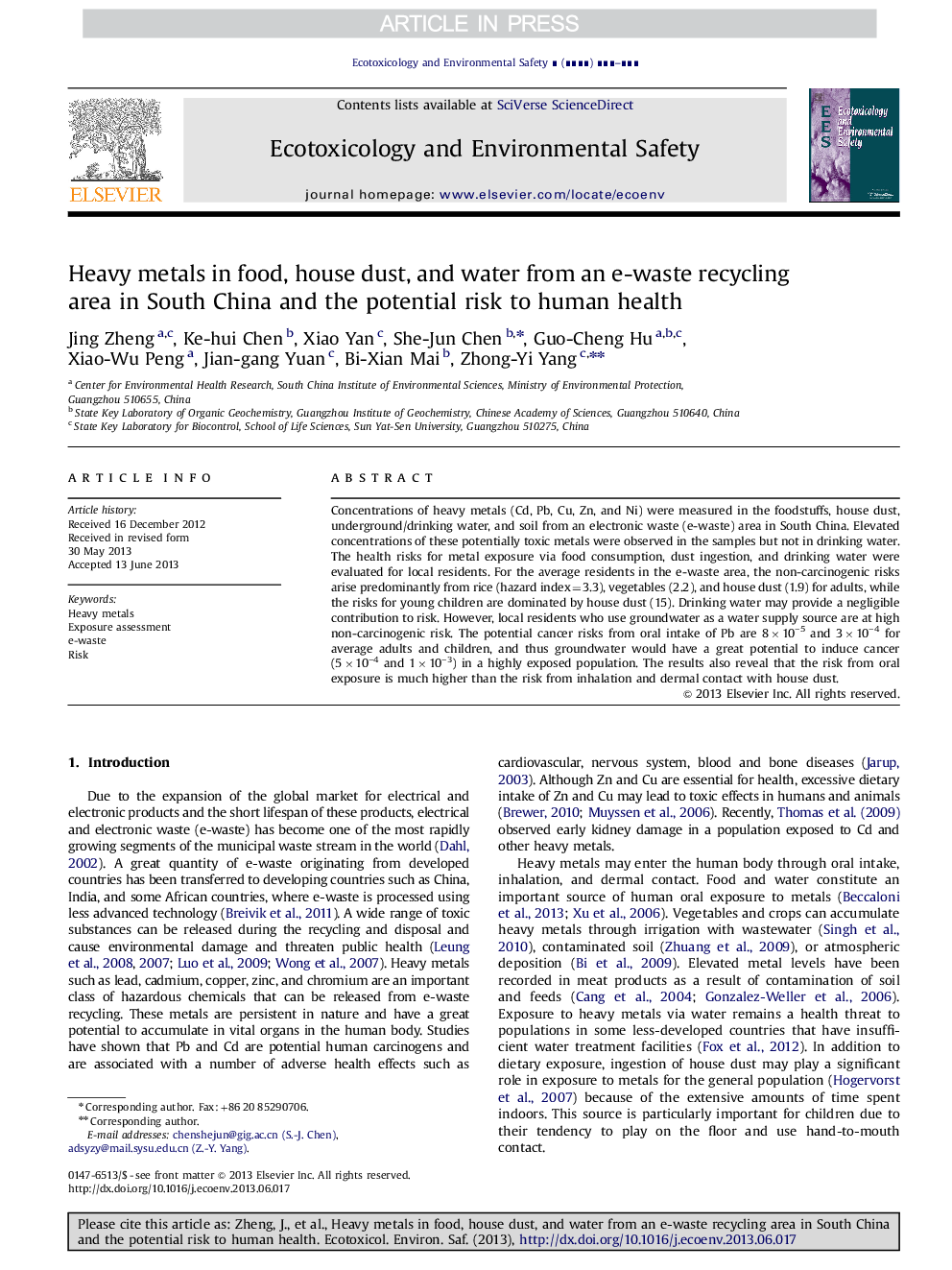| Article ID | Journal | Published Year | Pages | File Type |
|---|---|---|---|---|
| 6312379 | Ecotoxicology and Environmental Safety | 2013 | 8 Pages |
Abstract
Concentrations of heavy metals (Cd, Pb, Cu, Zn, and Ni) were measured in the foodstuffs, house dust, underground/drinking water, and soil from an electronic waste (e-waste) area in South China. Elevated concentrations of these potentially toxic metals were observed in the samples but not in drinking water. The health risks for metal exposure via food consumption, dust ingestion, and drinking water were evaluated for local residents. For the average residents in the e-waste area, the non-carcinogenic risks arise predominantly from rice (hazard index=3.3), vegetables (2.2), and house dust (1.9) for adults, while the risks for young children are dominated by house dust (15). Drinking water may provide a negligible contribution to risk. However, local residents who use groundwater as a water supply source are at high non-carcinogenic risk. The potential cancer risks from oral intake of Pb are 8Ã10â5 and 3Ã10â4 for average adults and children, and thus groundwater would have a great potential to induce cancer (5Ã10â4 and 1Ã10â3) in a highly exposed population. The results also reveal that the risk from oral exposure is much higher than the risk from inhalation and dermal contact with house dust.
Related Topics
Life Sciences
Environmental Science
Environmental Chemistry
Authors
Jing Zheng, Ke-hui Chen, Xiao Yan, She-Jun Chen, Guo-Cheng Hu, Xiao-Wu Peng, Jian-gang Yuan, Bi-Xian Mai, Zhong-Yi Yang,
